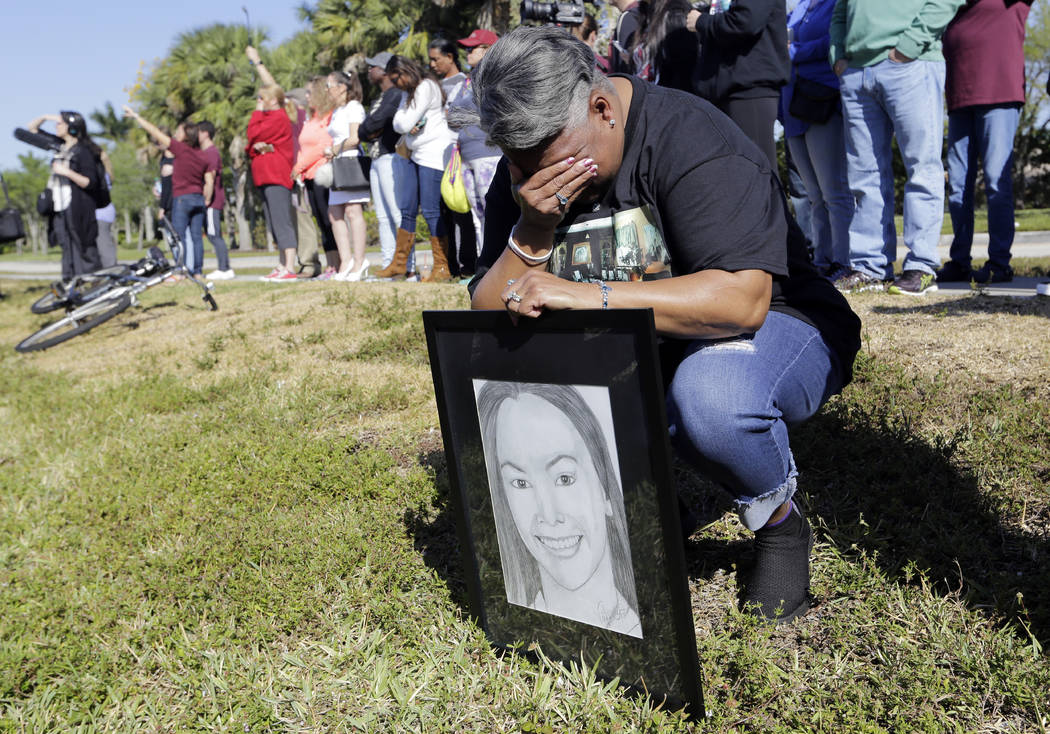Listening to students on gun control would have led to more students dying in Tuesday’s school shooting









If the students who walked out of class to protest gun violence had gotten their way, Tuesday’s school shooting in Maryland could have been much deadlier.
Last week, students at Maryland’s Great Mills High School participated in National School Walkout day. Students at numerous Las Vegas schools did the same thing. One of the demands was to remove guns from school police. “Guns do not belong in schools,” the organization’s website states. “Schools should become and remain gun-free zones for students, teachers, security and staff.”
On Tuesday, those students and the nation learned firsthand how wrong they were. A scumbag entered Great Mills High School and shot two people. He didn’t get a chance to shoot any more students, because Blaine Gaskill, an armed school resource officer, ran to the gunfire. He engaged the shooter, which ended the incident. Gaskill is the hero, but he needed a tool to stop the shooter — the very gun students didn’t want him to have.
That wasn’t the only leftist narrative debunked on Tuesday. National School Walkout also claimed the “push for armed security and teachers in schools would disproportionately impact black and brown kids by turning schools into prisons and bringing police brutality into the classroom.” Fifty-seven percent of the students at Great Mills High School are minorities. Gaskill is white. He put his life on the line for kids who just days ago accused him of bringing “police brutality into the classroom.”
Anyone now want to claim that Gaskill having a gun turned the school into a prison? I’ll wait.
This isn’t the first time that a good guy with a gun has ended a mass shooting or prevented further tragedy. Last November, an NRA instructor used an AR-15-style rifle to stop the Texas church shooter. Last summer during a congressional baseball game practice, capital police saved numerous lives by shooting back at a gunman armed with a rifle.
Although the government has made schools “gun-free zones” — for the good guys at least — there have been instances of guns stopping school shootings, too. In 1997, a 16-year-old student started shooting at his high school with a rifle, killing two and wounding seven. An assistant high school principal, Joel Myrick, ran to his car and got his .45-caliber handgun. He used it to detain the student.
What is reportedly the first modern mass school shooting in America occurred in 1966 at the University of Texas. A gunman shot 43 people from the clock tower, killing 13. It took three police officers and one civilian 96 minutes to get to an observation deck, where they killed him. Why didn’t the gunman hit more people? Because many Texas students were armed back then and fired back.
“The sniper did a lot of damage when he could fire freely, but when the armed citizens began to return fire the sniper had to take cover,” wrote Ramiro Martinez, the officer who killed the gunman.
Gun control advocates downplay incidents such as these. They argue that it’s impossible to tell if a shooter would have continued shooting, so you can’t claim a good guy with a gun prevented more violence. That’s quite the Catch-22. Point out how good guys with guns stop gun violence, and that doesn’t count because you don’t know if the gun violence would have continued? Wasn’t stopping gun violence the point?
If the Maryland school shooting had resulted in mass casualties, this Saturday’s March for Our Lives event speakers would have touted it as Exhibit A for more gun control. Because it doesn’t fit the “guns are bad” narrative, you have to wonder if it’ll be mentioned at all.
It should, because it provides an important lesson.
Having emotion and passion about stopping gun violence doesn’t mean that your policy proposals will actually stop gun violence. As you can see from the National School Walkout’s demands, policies proposed with passion can actually lead to more bloodshed.
Victor Joecks’ column appears in the Opinion section each Sunday, Wednesday and Friday. Listen to him discuss his columns each Monday at 9 a.m. with Kevin Wall on 790 Talk Now. Contact him at vjoecks@reviewjournal.com or 702-383-4698. Follow @victorjoecks on Twitter.













